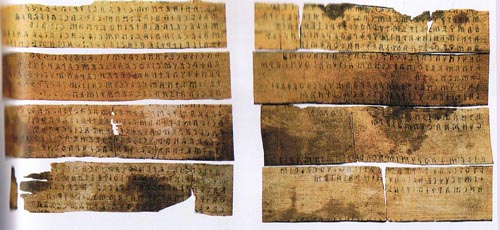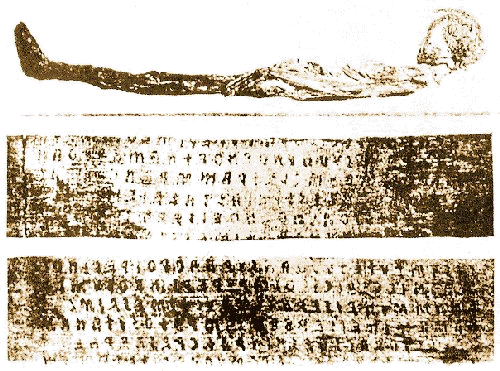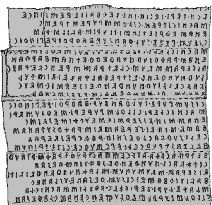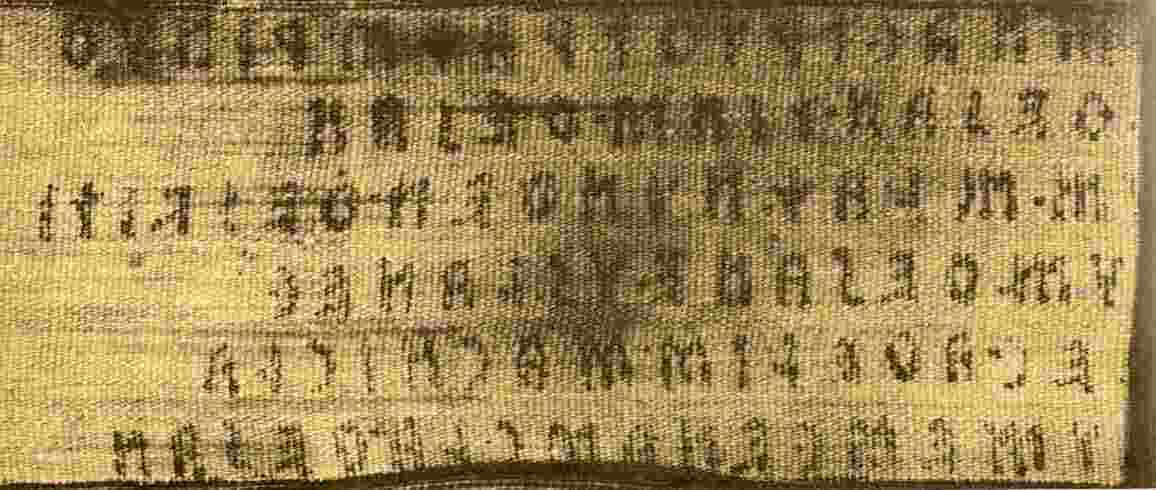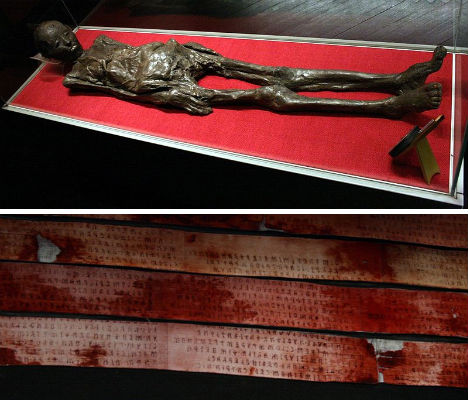Liber Linteus
Agram mummy bandage ( s) or Zagreb mummy wrappings (lat: Liber Linteus Zagrabiensis ) is called an old linen book which is written in the Etruscan language and in the Zagreb Archaeological Museum (formerly: Agram ) is kept. It is the longest Etruscan text, which is known today.
The book
The 3.40 meter long strip of linen was preserved because it was reused as a mummy bandage. The linen strips is labeled in 12 columns by 24 centimeters wide and was probably concertina folded so that each column formed a page. The written around 250-100 BC text is only partially understood, and describes a religious ritual. For the bandage of the mummy the linen book was torn into eight strips. The twelve columns of text include about 230 and about 1200 lines of readable words, of which 50 different expressions. They are written in red and black ink. The numerous repetitions you explain from the ritual character of the text. The text is largely untranslated. Few words are understood, giving rise to the ritual character of the text. The Agram mummy bandage was referred to as ritual calendar that describes the ceremonies for each day that were consecrated to the respective gods. Similar Etruscan calendar are known in Latin translation. Today there are nurmehr five of the strips of torn font binding in the Zagreb Archaeological Museum. The beginning of the text is lost. The end, however, seems to get safe since the last strip ends with a white surface. Some passages seem hymn -like, about: ceia hia in column 7, as well as variations of the passage šacnicleri cilθl špureri meθlumeri Enas.
Origin
Local gods name in the text suggest that in terms of production a narrow area in southern Tuscany near the Trasimeno lake comes into question, where the former Etruscan cities of Arezzo, Perugia, Chiusi and Cortona are. The date of the text style was determined by comparisons with other Etruscan monuments on the earliest 250 BC.
Fund and research history
The female Egyptian mummy from the Ptolemaic Alexandria was acquired by Michael of Barich (1792-1859) in Egypt in 1849, brought as a souvenir to Vienna and bequeathed to the Museum Agramer by his brother in 1867 after his death in 1859. In the same year, the German Egyptologist Heinrich Brugsch wrote from the text, which he held for Egyptian hieroglyphs. In 1877, he realized, with Richard Burton, that it appears to be a philological important text, which had been written in another language. He now took him for a transfer of the Egyptian Book of the Dead in Arabic script. In 1891, the bandages in Vienna by Jakob Krall, an expert from the Coptic script, examined. He held the text for either written in Coptic, Libyan or Carian script. However, he was the first to recognize that the language was Etruscan, and put the strips together properly.

.jpg)

